Yes, I do love the NYT Spelling Bee, and yes, that’s why I’ve been noticing these words.
- Hometown
- Townhome
- Outside
- Sideout
- Coattail
- Tailcoat
- Outrun
- Runout
- Output
- Putout
- Handoff
- Offhand
- Jackboot
- Bootjack
Yes, I do love the NYT Spelling Bee, and yes, that’s why I’ve been noticing these words.
Amazon has multiple teams developing systems for Seller Fulfilled Prime. You’d think these teams would talk to one another. You’d be wrong.
A Story About Maps
Amazon Prime is free two-day delivery. Amazon sellers can get their products on Prime by using FBA (Fulfillment by Amazon). Your products sit in an Amazon warehouse, ready to ship. At Customized Girl, we print on demand. Youc an see how custom printing is not compatible with FBA. Our items could not be on Prime.
That was true until we were invited to join Seller Fulfilled Prime (SFP) in 2016.
To offer Prime on our products we would have to take the cost of two-day shipping and bake it into the product price. But nationwide two-day shipping is very expensive. The price markup would be much too high.
Luckily, Amazon had a solution for us. We could offer Prime to only those parts of the country that were within range of two-day FedEx Ground shipping. Well, almost.
Here’s how it worked. We looked at the two-day delivery region on our FedEx Ground map. Then we looked at our Amazon Shipping Template. We tried our best to match them up.
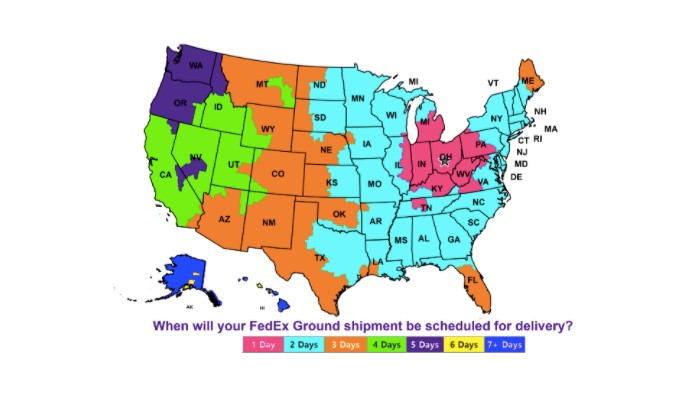
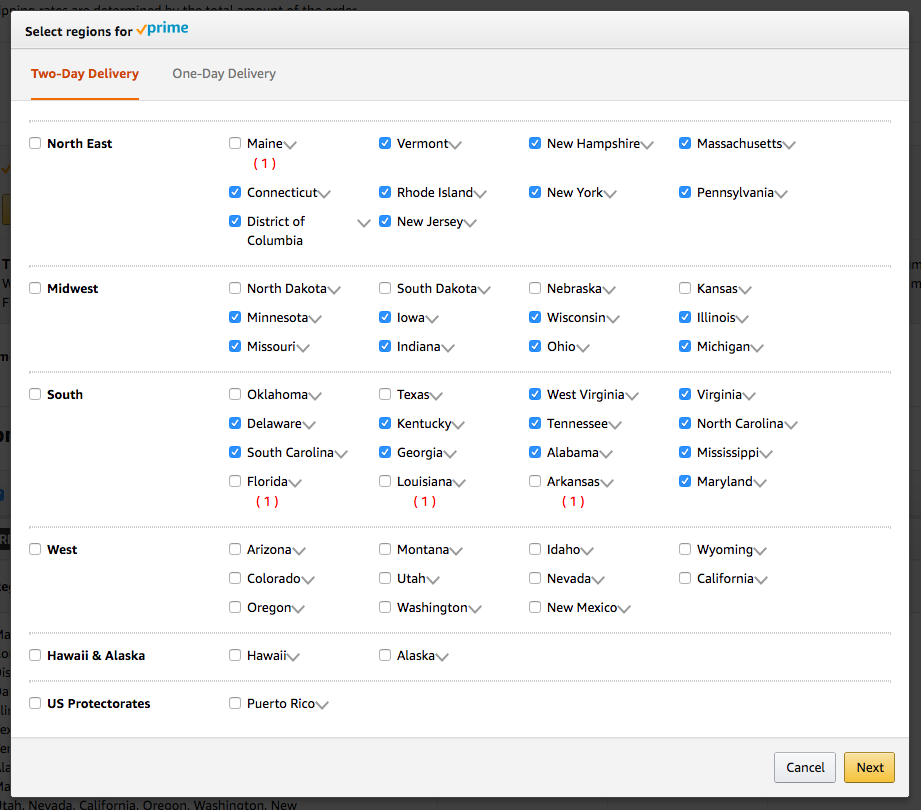
To do this, we dove into a sea of drop down menus. Florida was split up into three different regions. Which one matched our FedEx Ground map? Well, none of them. We had to guess. We went with Northwest Florida and hoped for the best.
As I was making a decision on each and every drop down menu in the shipping template, I kept thinking: “Why are they making me do this? They know the location of our warehouse. They know exactly which streets are two days away via FedEx Ground. Just let us enter our warehouse address and automate it!”
Three Years Later
Three years later, they did exactly that. In 2019 Amazon launched Automated Shipping Rules, and it was just as I described.
You enter your warehouse address. You enter exactly which carriers you want to use (we chose FedEx Ground but NOT FedEx 2Day). Bing bang boom. Amazon displays the Prime option to only those customers who live within a FedEx Ground two-day shipping range!
This worked just fine until a week before Christmas. Amazon was not satisfied with the performance of FedEx Ground. We would no longer see Ground as an option when we go to actually ship the order.
The method for actually shipping your Seller Fulfilled Prime orders is called “Buy Shipping”.
You can use Buy Shipping directly in the Seller Central interface, or you can access it via the API. We needed to be able to mark that package as shipped in our own backend, so we built a sophisticated API integration with barcode scanners and everything.
For a variety of reasons, we had to disable Prime on December 16th. So this particular FedEx Ground outage did not impact us. We were lucky. But we wanted to get back on Prime soon and we had to wait.
Finally, we got an email in mid-January saying that FedEx Ground would be available again. We were very happy to re-enable Prime.
Two Maps
During the peak holiday season, shipping prices can fluctuate in painful ways. In December, I was worried about how much Buy Shipping was charging us for each order, and I was checking that number regularly. After peak, I relaxed.
If I had checked more often in late January, I would have been alarmed. It usually costs us around $9 per order to ship Prime. Our new average was closer to $16 per order.
What was happening?! These orders are all supposed to ship Ground for $9. But most of our orders were being shipped FedEx 2Day Express for $20.
But this didn’t make sense. We were using Automated Shipping Rules. We had only enabled certain carrier options.
Was the FedEx 2Day checkbox accidentally checked? No.
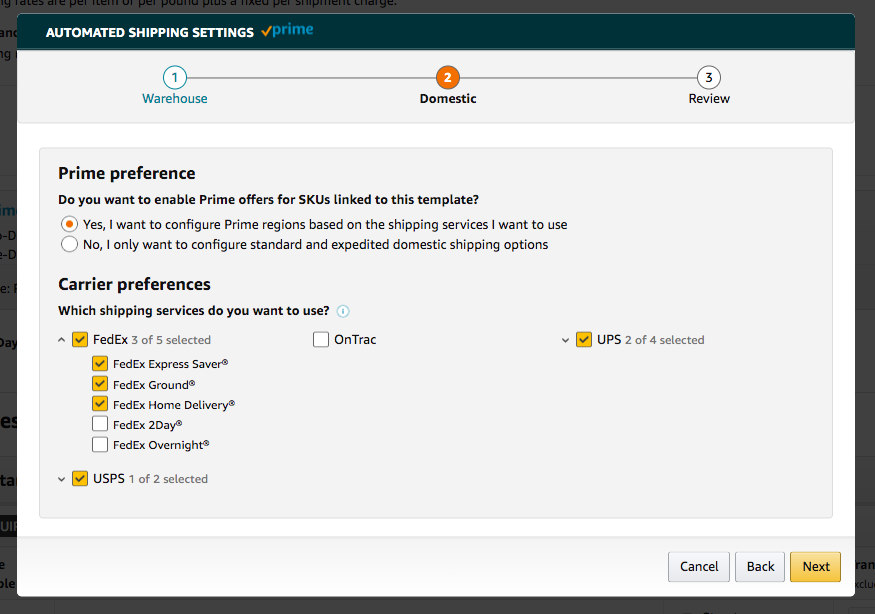
That’s when I realized: “Oh my god. They’re using two maps.”
The entire point of Automated Shipping Rules is to accurately display Prime shipping as an option to the customer based on the location of that customer. They do this using the options that we enable inside Seller Central.
But someone at Amazon HQ was angry at FedEx. They were paying close attention to certain routes and realizing that Ground only delivered on time 95% of the time. The threshold was 97%. (I am guessing here.)
So they built a new map. In theory, Ground shipping from Columbus to Manhattan was going to be two days. Not in the new map. If you needed to get it there in two days, you had to upgrade to FedEx 2Day Express.
Did they apply this map to the Automated Shipping Rules system? No.
Did they apply this map to the Buy Shipping system? Yes.
So Amazon was using one map to determine which customers could get Prime shipping.
And they were using a very different map when it came time for us to ship. Most of our orders were now going FedEx 2Day.
We disabled Prime. We filed a support ticket. We emailed everyone we could. I yelled into the void.
Please stop using two maps! We’re fine if you want to limit the number of customers who can place Prime orders, just please, use one map!
Finally, I reached out to my contact at CNBC. They reached out to Amazon PR.
The next day, all SFP sellers got a new email: FedEx Ground performance has significantly improved! You’ll see even more access to FedEx Ground inside Buy Shipping!
Remember, we had already gotten an email saying FedEx Ground was available again. Should we trust them this time?
That’s the beauty of being an Amazon seller. You don’t have to think about it too hard because you don’t have a choice.
We reenabled Prime on a Wednesday. Things looked good. The FedEx 2Day shipments disappeared.
First Breakdown
Then Friday came. My production manager came and said “we can’t access the Buy Shipping API”. I tested it in Seller Central. The error message said:
Services are not currently available. Please try again later.
I checked Amazon’s Seller Forums. Everyone was freaking out.
You can always use another method to go around Buy Shipping, but if you do, you will be immediately suspended from Prime.
There was one Amazon employee trying to answer questions on the forum. By 2 PM, she finally had an answer: just go outside of Buy Shipping. We won’t penalize you this time.
Of course the FedEx pick-up time for most sellers (including us) is around 5 PM. That gives us three hours. We wrote new code to go around the API for these orders. We deployed that update at 2:29 PM. At 2:30 PM, Buy Shipping was working again.
Rats! Revert! We reverted the code and barely managed to get all orders shipped in 2.5 hours.
The system felt very shaky. Again, we have to ask ourselves: do we disable Prime?
Valentine’s Day was a week away. One of our most important days of the year. It was my call. I enabled Prime.
Second Breakdown
I was nervous. I checked Seller Central all weekend. Clicking on orders. Clicking Buy Shipping. Checking those options. Was FedEx Ground appearing? Yes. Good… until, no.
On Sunday, there was no Ground. Buy Shipping was back to charging us $20 for FedEx 2Day. Oh no.
Again, I start filing support tickets. I start emailing. From the void, no one could hear my cries.
Except I did get a reply on my support ticket. A quick one! They said: you have to add a phone number to your warehouse location in Seller Central to see FedEx Ground.
What? How could those two things possibly be related? That form didn’t even have a field for a phone number when I first filled it out.
Also, you can’t just edit a warehouse location. You have to add a new, fake warehouse location, change your shipping templates to use the fake location, and then your original location can be edited. I did that. I added the phone number. Went back to update the shipping templates.
It worked. Somehow, it worked. FedEx Ground appeared in Buy Shipping.
Third Breakdown
On Monday I got to my desk and checked our shipping cost data. We had shipped 10 Prime orders. Every single one cost $20. They were all going FedEx 2Day.
No! I ran back to the ship station. Stop shipping!
This could not be happening. Over the weekend, we had accumulated hundreds of Prime orders for Valentines Day.
I tried to ship one in the Seller Central interface. I saw FedEx Ground. The price is reasonable. I chose it. Everything worked.
The API was returning one result and the Seller Central interface was returning another.
Unfortunately, we weren’t set up to ship via the Seller Central interface. We could do it, but each order took 5x as long. As usual, we didn’t have a choice.
I set up a new ship station in production. All hands were on deck. We shipped until 8:00 PM, and one minute before the final emergency FedEx pickup arrived, we printed the last label. We did it.
I immediately disabled Prime and began yelling into the void again. Support tickets. Emails. Phone calls. Why was the API different from Seller Central?
I only got one reply: “it’s supposed to work like that”.
This obviously could not be true. I re-opened the tickets. I heard the same answer. This went on for two weeks. My friend Ben sent me a LinkedIn profile of someone on the Buy Shipping dev team at Amazon.
I messaged them. They replied! We exchanged emails. They called me on the phone! I spoke to a human! He was nice.
He did not know what happened, but he had a suggestion. In the API, we were returning data for the “Needs By Date” column. But that field was optional. Why not leave it blank?
That’s what we did, and it worked.
In Conclusion
Remember that Friday when Buy Shipping was broken for every seller? They were working on that code. They must have changed a setting related to the Needs By Date in the API. We had not changed anything on our end. But regardless, it is fixed.
Even better, we saw that FedEx One Rate was now enabled inside Buy Shipping (as long as you enter the exact right dimensions).
We’re using One Rate now. If we had this in place 4 months ago, we could have avoided almost all of these issues.
I wish I could say that this was my only kafkaesque experience as an Amazon seller. Unfortunately, I have four more stories just like it. Those are for another day.
As far as I know, Amazon is still using two maps. If you ship a product that is too large for One Rate packaging, and if you’re using Seller Fulfilled Prime, then I say to you: good luck.
If you get tired of yelling into the void, tweet at me.
I published my last essay on this website five years ago. What have I been doing all this time? Having kids!
I’m now the proud Dad of a four year old boy and a two year old girl. They’re very cute and very defiant. We’re working on that.
I launched this website to share my work and to point out weird patterns.
Though I haven’t published anything new in these past several years, I have been secretly updating the Hand Dies First post. I’ve even been able to add a subgenre to the list: time travel movies!
As for my work: we’ve A/B tested our Custom Shirts page many more times. I’ll be honest, the version I featured in my original blog post was hard to beat. It took several attempts.
We’ve also been doing a lot more Facebook advertising, which renders obsolete my post titled Why Facebook Fails. In my defense, the Facebook Ads platform has evolved in leaps and bounds over the past five years. Remarketing lists. Lookalike audiences. Dark posts. A million types of targeting.
Facebook is a still a dangerous platform for beginners. If you run a decent ecommerce site and if you install the Facebook tracking pixel and if you run any ad targeted toward conversions… then you will see an unbelievable conversion rate. Literally. I mean you should not believe it.
Your first impulse might be to congratulate yourself. But can you really trust a $2 CPA? Is that even possible?
If you’ve installed the tracking pixel, Facebook knows exactly who is about to checkout on your site. If any of those people are also inside the target audience for your ad, then all Facebook has to do is “show” the ad in that user’s feed. By default, Facebook will count “view-through conversions”.
At first glance, it looks like your ad performance is beautiful. But dig deeper. Did those users even see your ad? Or did they just scroll right past it? Either way, Facebook will claim credit for that conversion when they eventually checkout. They were checking out anyway and as I said earlier, Facebook knows that.
To Facebook’s credit, they also give you the tools to combat this. Just like adding negative keywords to your Adwords campaigns, so too must you exclude certain audiences from your Facebook campaigns. For example, we have audiences of 7 day, 30 day, 90 day, and 180 day visitors. If we’re targeting cold or warm traffic, we excluded these audiences from our ads, which unskews our conversion data.
Amazon
We knew that more and more customers were starting their shopping experience on Amazon rather than Google. But we also knew that it would take a lot of development resources to sell directly on Amazon. After all, we print on demand. All designs are created within our interactive design center. That design center is a fundamental part of our organization and it doesn’t exist on Amazon.
Do you remember Amazon Product Ads? You could upload your product feed to Amazon, your products would appear in search results, and you would pay per click, just like Google. The click would actually take the customer away from Amazon and onto your site.
In early 2015, our Amazon Product Ads were buggy. Half our feed would be rejected. Traffic would drop off completely. We were getting an error message that said:
We believe that you have violated our policies by attempting to redirect Amazon customers to another website.
Uhhh, yes. That is exactly what we were doing. Because that is the entire point of your platform, Amazon Product Ads.
The writing was on the wall. Amazon wanted to kill Product Ads, but they didn’t want to say that they were killing Product Ads.
The only choice was to sell on Amazon directly. We couldn’t wait for the development resources, so we built our own specialized Amazon product feeds by hand and we placed every order by hand. Within a few months, it was clear that this was a successful channel. We got the development resources. We started automating all processes.
Sidenote: when I say “we”, I mean my team. The Amazon project succeeded due to the hard work of a lot of people, but mostly Jason Kienbaum.
Unfortunately, it wasn’t all sunshine and rainbows.
In the spring of 2016, the counterfeiters arrived. They attached themselves to our listings. They undercut our prices. When an order was placed, they would take our thumbnail image, blow it up, use that as the print file, make a terrible product, and ship it out.
All of our designs were created by our designers in-house. We printed everything in-house. When we uploaded our feeds to Amazon, the brand column was filled with our brands: Customized Girl, Bridal Party Tees, and FunnyShirts.org.
Now there were terrible reviews popping up on our products, under our brand. They said things like:
Re-read that last bullet point. Some of these “counterfeiters” weren’t even counterfeiting. They were literally just taking your money and not shipping anything. If you visited their seller profile, it would just be ten pages of reviews saying “I placed my order and I got a fake tracking number. Never received the package.”
We contacted our Amazon reps. Seems like an open and shut case, no? Sadly, no.
Somehow, it was our word against the “counterfeiters”. For Amazon, it was possible that these other sellers were buying from us, and re-selling our product.
But we don’t sell wholesale. No one is buying our product at retail for $25 and selling it on Amazon for $10. These other sellers provided zero proof that they had actually placed an order from us.
Instead, the burden of proof was on us. We had to buy the counterfeit goods and, in the event that we actually received the product, we had to take photos, document all the ways in which the item was clearly a knock-off, and send the reports to Amazon’s copyright department.
We tried doing this. It didn’t work. Here is why. By the time we even got the goods, that seller was already banned. Every time. Amazon has strict rules about “on time delivery percentages” and “customer satisfaction ratings”. These counterfeiters were producing garbage and their customers hated them. After all, they’d been duped.
In theory, this would be great for us. Counterfeiters were getting busted! Yay! But it didn’t matter. The sellers were using software to automate the creation of new seller accounts. The seller names were essentially a random string of alpha-numeric digits. They had thousands of accounts. As soon as a hundred got killed, no big deal, they moved on to the next hundred.
With the burden of proof on us, it was impossible to keep pace.
There had to be another way. At this point, we were selling custom products on Amazon. You could enter your own text, and we would print it and ship it. With custom products, Amazon recognizes that you might be the only company that can produce the customized print you promise. Other sellers cannot attach to those listings. So we knew Amazon had methods of preventing these attachments.
It was clear that our product pages should be ours and ours alone. No other sellers should be able to attach to our listings.
I talked to our reps. I made it clear that I was going to email them every week with one of two potential outcomes:
A) Our account would be freed from other sellers.
B) I would die.
So I emailed them. Every week. For months and months. And eventually… it worked. We found someone to help us. And that person maybe just saved the livelihoods of the 85 people who work at eRetailing.
Storefronts
One of my early essays on this site was titled Deep Thoughts on the Print-on-Demand Industry.
In that post, I compared CafePress and Zazzle to what we were doing at eRetailing.
CafePress and Zazzle were the leaders of the POD storefront industry. On those sites, anyone could open a store, post designs for sale, and earn a royalty when those designs sold.
They excelled at building a platform. But they did not excel at customization. Those storefront designs were basically static images that users had created in photoshop and uploaded to the site. The designs themselves weren’t truly customizable.
We did excel at that. And we continued to launch new businesses aimed at specific niches, offering customization: Bridal Party Tees and FunnyShirts.org. (Example design: Buy Me a Shot, I’m Tying the Knot: [Name Here]’s Bachelorette Party.)
It seemed to me, the future was a combination of both business models.
The ultimate POD website would be a platform where you could create your own custom apparel business aimed at your own favorite niche, while offering genuine customization.
Well, we built it. We launched a storefront platform on each of our three sites in 2014.
We were trying to create a platform where anyone could join up and launch their own Bridal Party Tees.
Guess what? That’s exactly what happened.
The best example might be a storefront on Customized Girl called Mom Means Business.
Just like Bridal Party Tees, she has a very specific audience: sports moms.
And just like Bridal Party Tees, she sells truly customizable designs. Usually they have a cute and clever graphic on the front and on the back it will say: MOM OF 00. You customize the jersey number to match your son or daughter.
This has been extremely exciting for me. I had spent so much time working on (and thinking about) the storefront platform project. It seemed obvious to move in this direction, but I didn’t know for sure if it would work. It took three years from the date of my original blog post. I had hoped for this exact type of store to pop up and then, almost immediately after we launched, there it was.
Leadership
I love writing about our various marketing channels. But the best part of these past five years? Building a team.
I now head up the Marketing department at eRetailing. The people on my team are smart and efficient and talented and I’m proud to be associated with each of them. I’m really looking forward to the next five years.
Anyone with a Facebook, Twitter, or Tumblr account has probably noticed a growing trend in the behavior of many web users. If certain people have a question, any question at all, they are increasingly likely to post their question to a public place, no matter how easily the answer might be found with Google.
I’m not sure if this behavior has an official name, but I call it “Asking the Aether”.
The questions range from terrifying (“Is Ohio a state?”) to depressing (“Who is Paul McCartney?”) to genuine (“Where can I buy this?”)
From reddit:
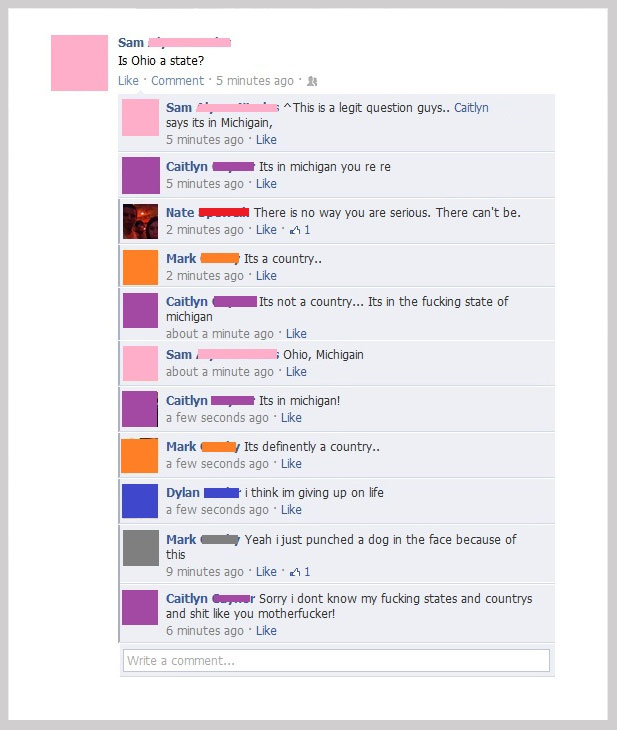
From buzzfeed (a collection of tweets during the 2012 Grammys):
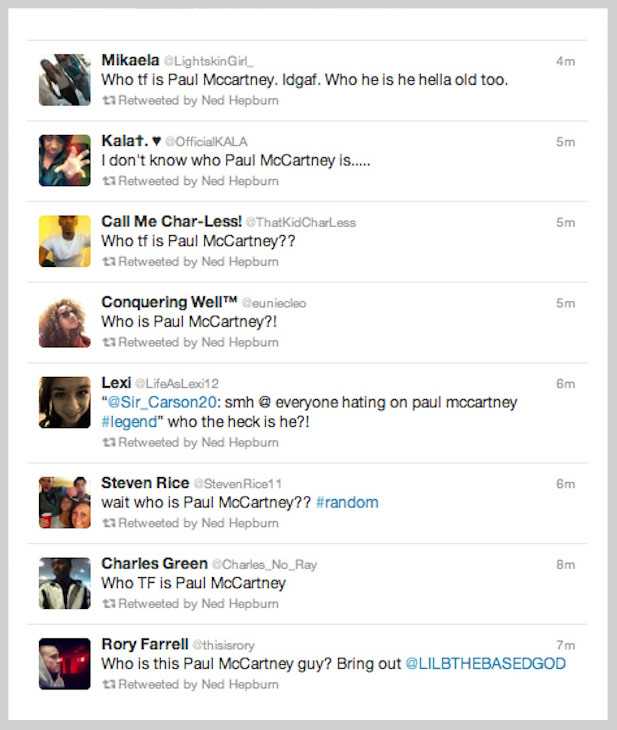
From Tumblr:
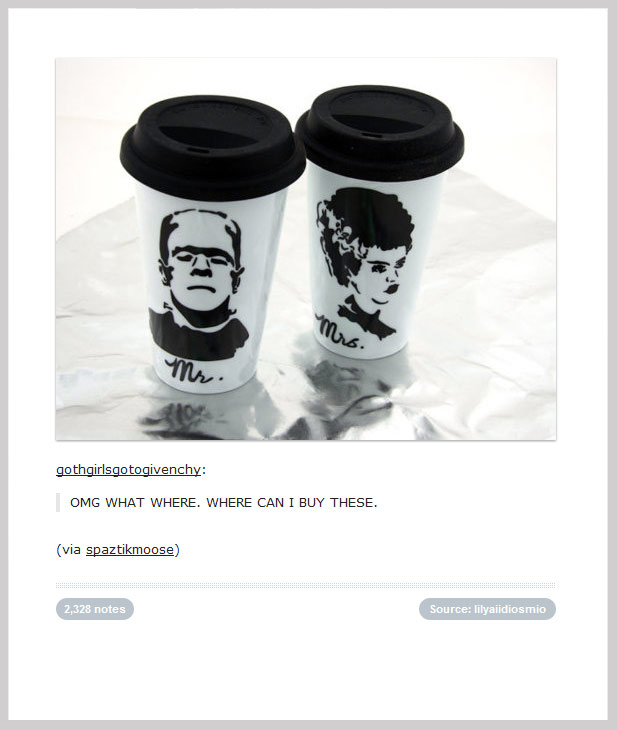
I’m still hoping the first example is a fake screenshot, but regardless, I have no doubt that many similar conversations appear all over Facebook every day. It’s particularly surprising to see how upset the person gets once they realize that Ohio, is in fact, a state. Certainly they knew this information was at their fingertips? It’s just a Google search away? But they decided to ask Facebook instead. Were they unable to predict this reaction from their peers?
For me, the Tumblr post is much more interesting.
Due to the popularity of “reblogging”, content on Tumblr is easily divorced from the original source. Images get reblogged and reuploaded, destination URLs get changed, sometimes the source button takes you to the original, but often times it does not.
This results in a lot of Tumblr users finding awesome products in their feed, but with no way of purchasing them. Well, not without a little effort at least. Most Tumblr users are much more comfortable simply reblogging the image with this new bit of text attached: “OMG where can i get that?!”
One day recently, I guessed that these types of posts represented an opportunity. I don’t mind saying that I pride myself on my Google skills. With the right keyword choice and tools like reverse image search, I was sure I could find these items for sale. I signed up with a few affiliate programs, I bought a domain (findthatthere.com) and I registered accounts named findthatthere on the biggest social sites: Reddit, Twitter, and most importantly, Tumblr.
I whipped up a logo and I was in business:
My strategy was to search Google using phrases such as:
“Where can i buy” alone results in a total of 3 million hits (as of March 2012). If you narrow your search by “past 24 hours”, you’ll see that roughly 100 people post this comment to Tumblr every day.
My next step was to reblog each post and add a link to the place where that item could be found.
Alas, FindThatThere was not successful. Unfortunately, there is no sure way to get your reblogged post in front of the right person. Tumblr only alerts you by email if another user follows you or asks you a question. A user would only notice my reblog if they were paying close attention to their blog’s activity feed. I could send them a message using the “Ask” feature, but Tumblr does not allow links to be included in messages.
FindThatThere is no longer active, but I still think there is money to be made.
Tumblr, the company, should embrace this trend in behavior.
The easiest way would be to hire one person to monitor all new comments that include “where can i buy”, then message each commenter with an affiliate link.
Of course, the beauty of Tumblr lies in it’s ability to spread viral content. Some of the posts on FindThatThere had already been reblogged 20,000 times. Every time someone comments “where can i buy” on a post, that post should be flagged with a badge. That badge should be an affiliate link. Example:
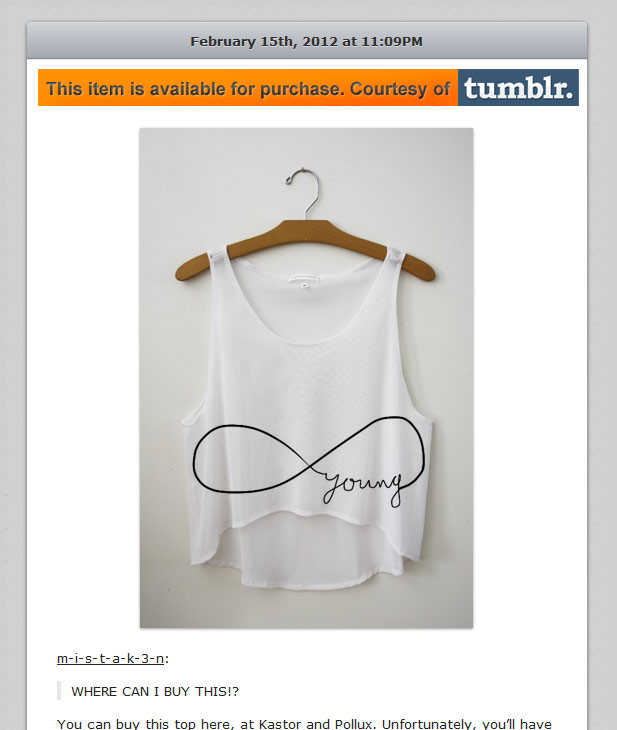
That commenter was certainly not the only Tumblr user to see this post and wonder where they could buy it. A bright orange badge would alert all other users of the affiliate link as well.
Now both of these initiatives might only bring in a few measly dollars, but imagine what would happen if Tumblr users started to expect this kind of functionality. Searching on Google can be difficult and frustrating for many people. What if Asking the Aether becomes the new normal? What if every time they want to buy something, they just post a comment? If that happened, Tumblr would begin to replace Google for those users. And that would be worth more than dozens of dollars.
This essay is going to deal with a specific problem many users of Google Adwords face. What happens when you are using the “See Search Terms” feature and you notice that the search queries are triggering the wrong Adgroup?
Here is a real world example straight out of our Bridal Party Tees Adwords account: for a while we had been noticing that our “Bridal T-Shirts” Adgroup was being triggered by search terms such as “Bachelorette Party T-Shirts”. This was particularly frustrating because we already had a different Adgroup focused specifically on bachelorette party t-shirts. This adgroup included all keyword variations of “bachelorette party t-shirts”, it had ads specifically for that product, and most importantly, it had a landing page specific to that term. People were searching for bachelorette shirts and even though we had a beautiful landing page built just for them, they were being taken to our landing page for bridal t-shirts.
In fact, this was happening all over our account. Almost every adgroup was being triggered by keywords from adgroups we already had in place.
Despite this, our margins were still excellent. I could see that people searching “bachelorette party t-shirts” were still converting at a good rate, even if they clicked on one of our Bridal T-Shirt ads. Perhaps the rate was not as good as if they had been shown the correct ad, but still pretty darn good. I assumed this was because the site itself is relatively simple. We sell custom t-shirts to bridal parties and bachelorette parties and that’s about it. (Well, we actually sell a lot more than that, but those are definitely the majority of the business.) I also assumed the good conversion rate was partly due to our easy-to-navigate menu (designed by me, by the way /humblebrag), which lets users easily jump from bridal to bachelorette.
Because of this, we chose to let it ride. The only thing I could think to do would be to add negative keywords at the adgroup level, thus forcing the correct ad to show up for the correct term. But the Adwords auction machine works in mysterious ways, and I was afraid adding those negative keywords would result in a loss of volume.
This went on for a while until one of my newer team members was going through the Bridal Party Tees account, adgroup by adgroup, and using the See Search Terms feature. This particular team member was rather anal about keywords, which is the exact quality you want in a paid search specialist. The fact that search queries were triggering the wrong ads was driving her nuts. I couldn’t blame her, it had always bothered me as well.
We finally agreed to take the issue to our Google Adwords Reps. They advised us to use negative phrase match keywords in every adgroup. For example, add “bachelorette” as a negative keyword in our Bridal T-Shirts Adgroup. Then they told us to wait a couple days while they double checked with their colleagues. A few days later, they reconfirmed: add the negative phrase match keywords. So we did.
Over the next week, our account tanked. Impressions were down, clicks were down, and revenue was down. The difference in our margins was not significant. We had made a mistake.
We immediately deleted all of the negative keywords we had just added. Eventually, things went back to normal.
So what happened? First, let me tell you how our adgroups are structured. We are very precise with our adgroups. Each one represents a single, specific concept such as “bachelorette party t-shirts”. We have different adgroups for bachelorette apparel, bachelorette tank tops, and custom bachelorette t-shirts. Within each adgroup, we have every keyword duplicated three times, once for each match type. In essence, each adgroup is three individual adgroups, consisting of broad, phrase, and exact match types. We adjust bids by match type and create very specific ads for those keywords.
For the most of our keywords, our quality score is a 7 out of 10. But throughout our Bridal Party Tees Account, we actually have a good amount of 9s and 10s too. And here is where we went wrong with our negative keyword plan: we underestimated the importance of these quality scores.
I said earlier that the Adwords Auction machine is a mysterious beast, and it is. No one knows the details of how it works, but this is the general idea: let’s say I have a quality score of 10 and my competitor’s score is 5. If we both bid $2.00, then my total score is 20 (10 x 2 = 20) and his score is 10 (5 x 2 = 10), which puts me in first place. If he wants to beat me, he has to more than double ($4.01!) my bid to win the auction and get to first place. (Again, this is roughly how it works.)
It is my estimation that our broad match keywords with a quality score of 10, sprinkled throughout our Adgroups, were winning a lot of auctions for keywords from a different Adgroup. They were beating not only our own exact match bids for that keyword, but our competitors’ bids as well. Once we put the kibosh on that, our competitors started winning more auctions. (I use the word ‘winning’ as short hand for ‘ranking well’.)
Lessons learned:
I recently participated in the Stir Symposium at Ohio State. My role was “Visualizer” for the Learning 2 workshop. I brought my trusty sketchbook with me, sketching and taking notes throughout the weekend. My next task was to task was to take those sketches and create a polished 11×17 page to be included in the Stir Book, which will be published via Lulu.
Click these images for bigger versions.
This post was featured by Sketchnote Army. Go check it out to see what the other, super talented Visualizers created.
A year ago, when this website was still in the planning stages, I was compiling a list of potential essay ideas. One of them was set to be “Why Y Combinator and Techstars Would Make Great Reality TV Shows”. I don’t always admit it readily, but I am a fan of certain reality tv shows, particularly Top Chef. Unlike most reality programming, shows like Top Chef and Project Runway take individuals with actual talent and showcase that talent. The contests are merit-based, so it’s fun to pick your favorite players and root for them all season long.
Years ago, while learning about YCombinator, it became clear to me that all the elements that made a successful reality show were present in the YC process including:
All of these factors would make a show worth watching (for me anyway), and on top of that, the exposure could be hugely beneficial to the startups themselves
In 2009 I started following the 5 minute videos posted weekly on Techstars.tv. These guys were doing it right: nice editing, great music, a high quality production all around. It kept me coming back every week, and it made me even more sure this idea would be a great tv show.
Clearly, I’m a little late. The Techstars reality show launched two weeks ago and the third episode airs tonight at 9PM ET on Bloomberg.
So why should you watch it? Well, many of the reasons are in the bulleted list above, especially the pressure and the potential. But you should also check it out for the following reasons…
Everything Seems Eerily Familiar… In a Good way
Watching Top Chef, it took me a while to get used to some of the jargon, and when a celebrity chef is introduced I never recognize the name or the face. Techstars is the exact opposite.
One of the first founders they introduce is Jason Baptiste of Onswipe. Hmmm, that name sounds familiar. Wait a minute, is that jasonlbaptiste, the prolific HN commenter? Ah, indeed it is.
And what’s his company? Onswipe? It’s goal is to “make your publication look great on tablet web browsers”. Huh, that’s the exact idea my friend, whose graduate thesis is about designing long form publishing for tablets, was just talking about.
While I never recognized a celebrity restraunteur from Top Chef, it seems like every mentor on Techstars is also a prolific tech blogger. Hey, isn’t that Fred Wilson? And isn’t that Gary Vaynerchuk? Why yes, yes it is.
Heck, even David Cohen was wearing my sweater. I’ve never seen anyone with that sweater!
Companies in the Midst of Customer Development
“So we’re trying to figure out what I call Product/Market Fit.”
– Melanie from To Vie For
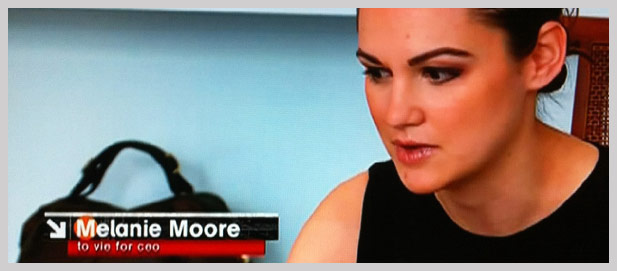
As I was watching the show, I couldn’t help but constantly think back to Steve Blank’s book The Four Steps to the Epiphany. In it, Blank argues that startups and new projects within existing companies should start with Customer Development instead of Product Development. When I first read it, I felt a little giddy with excitement. Maybe it was the self-published feel of the book, what with its terrible cover art (no offense, Mr. Blank), but it was like I had some kind of secret manual. Maybe everyone in the tech startup world had heard of it, but not too many in my part of Ohio had.
The Techstars show is exciting because these companies in the middle of the Customer Development process, and we get to watch how they navigate it. Based on the fact that Techstars has to turn away thousands of applicants, I’m a bit surprised more of the companies are not further along in the Customer Discovery phase.
Listening to the startups talking about their businesses and the language they use, you can sense that each team is thinking consciously about where they are in the Customer Development process. When I heard Melanie of To Vie For utter the phrase “So we’re trying to figure out what I call Product/Market Fit”, I couldn’t help but think, yeah, you know who else likes to call it that? People like Steve Blank and Marc Andreessen who use it constantly in their writings. But give her credit because she was literally “getting out of the building” and talking to potential customers, another element of the Steve Blank mantra.
In fact, the influence of Steve Blank is so thorough, the man himself appears on screen as part of a demo for another startup, SocratED.
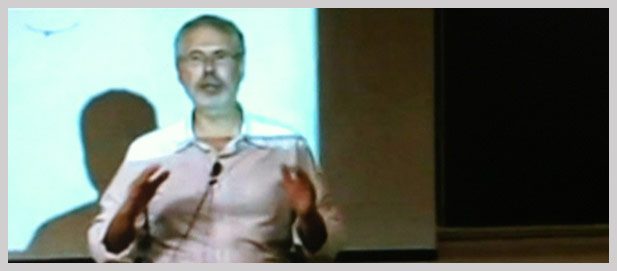
This Show Was Made For You
Ultimately, we as readers of HN represent the ideal target market for BloombergTV. They have made this show for people with our specific set of interests, and I’m finding it very interesting indeed.
I can’t wait to hear what advice Fred Wilson and the other mentors dole out.
I can’t wait to see what startup “wins” the next 10:10 meeting. (Once a week, Techstars holds a meeting at 10:10 pm where all the founders gather and where at least some Jack Daniels and Heineken get involved. The founders present, a winner is decided, and a special prize is awarded. On episode 2, that special prize was a visit to one of the technical advisors on Spielberg’s Minority Report.)
And I can’t wait to see what some of these really smart companies, like Wiji, a company who is trying to customize outdoor advertising based on the viewer, are able to produce. I suppose I could find out just by Googling them now, but I’d hate to ruin the suspense.
I hope you tune in too.
My talented and beautiful wife is the chairperson of Stir, an upcoming design symposium at The Ohio State University. From their about page:
The Stir Symposium seeks to provide an opportunity to collaborate, think, and discover new ways to approach big global issues. Participants from many disciplines will bring their own expertise to the table, thereby allowing us all to start addressing problems and issues in ways we never would have thought of on our own. The Stir Symposium is about collaborating and thinking in new ways, no matter the discipline: business, architecture, engineering, design, agriculture, geography, and more.
Interesting, right? I’ve been fascinated by this upcoming symposium since the beginning, and I was hoping there would be a way I could get involved. Then I found about the role of Visualizer. It seems that each Stir session (workshops and discussions) will contain a Visualizer who will summarize and visualize the process and outcomes of that session. Unsurprisingly, I was in no way allowed to simply waltz in as a Visualizer. I had to apply like everyone else and so I did.
The following images represent my application (click to embiggen).
They wanted to be sure each Visualizer had the ability to come up with quick and attractive infographics, so the first image requested was an infographic covering a specific Stir theme. I chose the theme “Moving: taking public transportation to work”.
They also asked for a portfolio of 3-5 pieces.
This first image is a mockup of a website I’d been tossing around in my head. It’s called Screenshotput, and it’s a huge library of images from pop culture, mainly screenshots from film and tv, and it is also a tool that lets users put their own text on these images. I created this mockup a couple years ago, before comixed gained much traction, and before the Rage Face generators and Quickmeme even existed. I still think comixed has a lot of room for improvement, so perhaps there is still opportunity in the world for a site like Screenshotput.
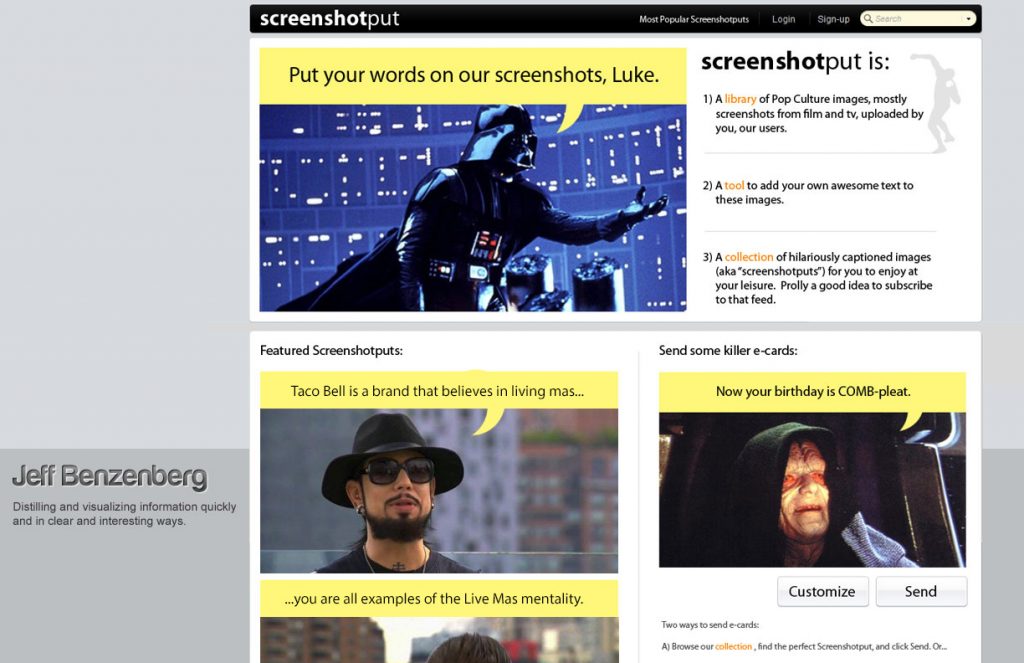
This next image is a mockup I created for a couple friends who are starting a classified ad site for dog breeders. It’s a pretty neat idea: take a classified section that craigslist doesn’t do very well and create a niche site dedicated to it. They could certainly expand past dogs quickly. Not sure when this will launch.
These final two images are from websites I have designed. If you dig them, check out my posts on Customized Girl and Follow Function. (This is the “custom t-shirt” landing page on Customized Girl).
Today’s installment of a remarkably specific list covers plot lines from popular fiction in which a major character’s imminent demise is foreshadowed by problems with their hands.
Albus Percival Wulfric Brian Dumbledore
The sixth novel in the Harry Potter series, The Half Blood Prince, begins with Dumbledore coming to visit Harry on Pivet Drive. Harry notices Dumbledore’s hand is blackened and dead-looking. He asks about it almost immediately, but Dumbledore shrugs it off, saying “I have no time to explain now. It is a thrilling tale, I wish to do it justice.” Harry asks Dumbledore several more times throughout the book, but each time he is rebuffed.
At the end of the novel, it is still a mystery. Well, sort of. The biggest mystery at the end of the book is the one of Snape’s allegiance. J.K. Rowling very cleverly unravels the story to make it seem as though Snape is evil, and aligned with Voldemort.
But if this is true, then Dumbledore was wrong about him, and Dumbledore was almost never wrong, particularly when it came to wartime strategizing. So at the end of the Half Blood Prince, if you wanted to get to the bottom of the biggest mystery, all you needed to do was concoct a little thought experiment. If Snape was good, then the only reason he would ever kill Dumbledore would be on Dumbledore’s own orders.
But why would Dumbledore want to be killed? Only if he knew his own death was imminent. And do we have any indications that Dumbledore might be ill? The hand. Sure enough, near the end of the seventh and final book, it is revealed Dumbledore tried to wear Marvolo Gaunt’s ring, which was protected by a very powerful dark curse. The curse started at his hand and was spreading to the rest of the body when Snape was able to stop it. But a curse such as this one could never be completely stopped. Dumbledore would be dead within a year, but he would be killed in the manner in which he chooses.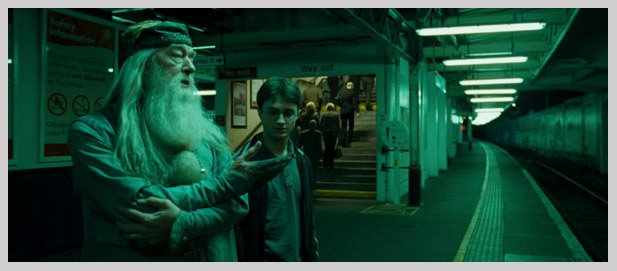
Marty McFly
“Pretty mediocre photographic fakery; they cut off your brother’s hair!”
This was Doc Brown’s comment after seeing Marty’s proof that he really was from 1985. It was a photo of all three McFly kids, and his sister was wearing a sweatshirt that said Class of ’84. Soon, they realize Marty’s Mom is in love with Marty, and it all becomes clear for the Doc. They look at the picture again, and Marty’s brother’s head is now missing. Erased… from existence.
The timer has started, and Marty needs to make his parents fall in love before his brother and sister are erased, because Marty himself will be next. It all comes to a head during the Enchantment Under the Sea Dance. Marty is playing guitar on stage when some jerk cuts into George and Lorraine’s dance (laughing maniacally, for some reason). Marty’s hand starts to fumble at his guitar, and when he looks at it, he sees it disappearing right in front of his eyes.
But of course George triumphantly returns, shoves that jerk to the floor, and kisses Lorraine. Marty pops up, having narrowly avoided his demise.
Interestingly, problems with the same hand also play a role in the plot of Back to the Future Part II. In the original version of 2015, we learn that Marty was always a sucker whenever someone called him “chicken”. He had been goaded into a drag race with Needles (played by Flea from the Red Hot Chili Peppers, incidentally), and had crashed into a Rolls Royce, thus ending any hope of a music career. Luckily, Marty learns his lesson in the old west, never races Needles, and presumably goes on to become a huge Rock N Roll star with a fully functioning right hand.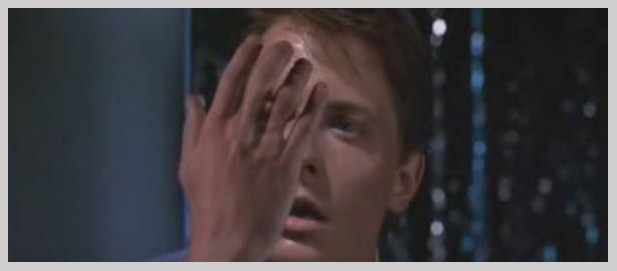
Roy Batty
Roy is a Nexus 6 Replicant in the film Blade Runner, which means he is an incredibly advanced robotic humanoid. It also means he was programmed to live only four years, in the hopes that he would be unable to develop complex emotions in such a short time period.
Roy is perhaps the most obvious entry in this list, because his bodily failure begins with his right hand. In an effort to regain control of his hand, he takes a nail and jabs it through his flesh like some kind of zombie Jesus. At this moment, the audience realizes Roy’s time is quickly running out. At first it seems his last goal in life is to kill Deckard, but once he realizes death is so near, Roy saves him instead.
Roy uses his final moments to wax poetically on life and death, saying “I’ve seen things you people wouldn’t believe: Attack ships on fire off the shoulder of Orion; I’ve watched C-beams glitter in the dark near the Tannhauser Gate. All those moments will be lost in time, like tears in rain. Time to die.”
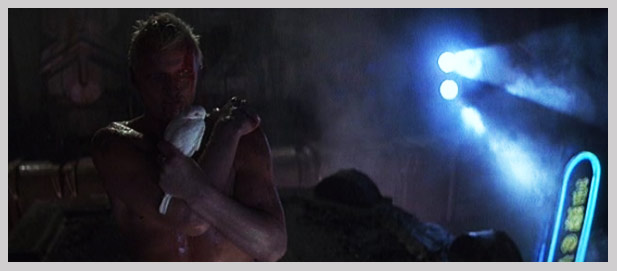
Captain John H. Miller
Tom Hanks’s hand shakes in the opening scenes of Saving Private Ryan because he is not an invincible war hero. He’s just a regular guy, a high school English teacher, thrust into war, trying to do the best job he can. He’s not John Wayne and he’s certainly not Superman.
He is, on the contrary, extraordinarily mortal. And this makes his character all the more heroic. This is also why the casting of Hanks is so perfect. Unlike Vin Diesel, who would use this film to propel himself into action stardom, Tom Hanks is the anti-action-star. He is the Jimmy Stewart everyman, and he makes us fellow non-action-stars ask ourselves: if we were in that position, could we do it?
Speaking of Diesel, Saving Private Ryan featured a huge number of actors in small parts who would later find much success on the big and small screens including: Nathan Fillion (Firefly), Bryan Cranston (Breaking Bad), Barry Pepper (True Grit), Jeremy Davies (Lost), Paul Giamatti (American Splendor), Ryan Hurst (Sons of Anarchy), not to mention established actors like Dennis Farina, Giovanni Ribisi, Matt Damon, Ed Burns, Tom Sizemore, and Ted Danson.
Ted Danson plays a character named Capt. Hamill, whose name, along with the line “I’ve got a bad feeling about this”, are references to films of Spielberg’s good friend George Lucas. These films lead us to the last character on this list…

Darth Vader
Although Vader loses his hand immediately before his demise, I’m including him on this list as an exception to the rule. The loss of his hand does not foreshadow or lead to his demise, but it does the opposite: it nearly saves his life.
The scene takes place in the final moments of Star Wars Episode VI: Return of the Jedi. Luke is trying not to engage his father in a light saber duel, but when Vader threatens Leia, Luke fights back with a fury. He slashes at a fallen Vader, cutting his hand off at the wrist. Vader is finally vulnerable, and it’s Luke’s chance to kill him.
But Luke looks at Vader’s stub of an arm and then he looks at his own mechanical hand. He had lost his cool, he had stooped to Vader’s level, and he was through fighting. Vader is spared due to the sympathy gained from a missing hand. Sure, he dies minutes later, but in that moment he is the anti-Dumbledore-McFly-Miller.
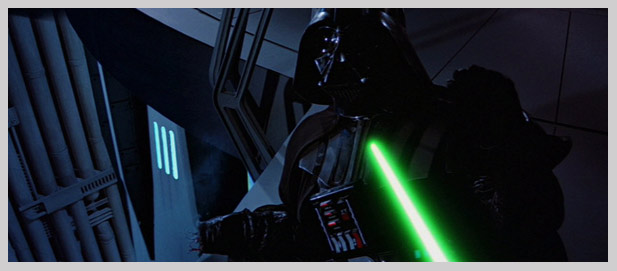
Update 1: October 18, 2012. I’d been looking forward to seeing Rian Johnson’s Looper ever since I first heard he was making it. Looper did not disappoint. There is an incredible scene which I will describe below (warning: spoilers), and it reminded me of a similar scene in the Dennis Quaid film Frequency. I realized I could add both films to this list, and then I realized something even better: three films on this list now involve time travel which means we have ourselves a SUBGENRE!
Seth
Loopers are assassins, killing people for a mafia that exists 30 years in the future, after time travel has been invented. The mafia sends victims back in time to be killed by loopers. Eventually, the mob closes the loop of a looper by sending him back in time to kill himself.
The flaw (obvious flaw, quite frankly) in this strategy is that the one person in the world least likely to murder a person is that person himself. Occasionally, a looper let’s himelf run free. But the mob has a rather brilliant solution.
They kidnap the young looper. They carve a location into his arm. The old looper watches as the scar manifests on his skin. For a second, the old looper might be inclined to ignore it. But then he watches as a finger disappears. Then another one. Then his nose. He steals a car. He races to the location etched onto his arm, but as he gets there, he can’t stomp on the brakes because his foot is gone. Then his legs. Then his arms. Eventually, he is a living stump, and his last sight is a dark room, with a man on a table, kept alive by a doctor, completely wrapped in surgical gauze. It all started with a damaged hand. (Image credit to this awesome article on Looper’s FX.)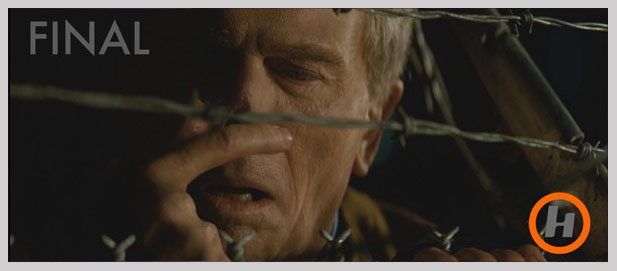
Jack Shepard
Watching the above scene in Looper I had two thoughts: 1) this is the most disgusting thing I have ever seen on film (somehow way grosser than any gross-out horror flick) and 2) I’ve seen this before!
But if you count both myself and Rian Johnson perhaps that just makes one of us. I’m guessing he never spun Frequency, starring Dennis Quaid and James Caveziel, on his DVD player.
The concept was the same. The execution was a little different. Both were awesome. In Frequency, a young father in 1970 and his grown-up son in 2000 are able to magically communicate via HAM radio (something about the northern lights). The son can tell the father things, and this can result in the future (or present) changing. The main thing the son wants to change is the death of his mother, who was murdered by a serial killer in late 1970. The father, a cop, goes on the chase and eventually finds the killer in his own home. In fact, the killer is in both of their homes – in 1970 and in 2000 – at the same time.
The HAM radio crackles with noise as both father and son wrestle with the same man. In 2000, the son is getting choked to death. But in 1970, the father is grabbing a shotgun and blowing the killer’s hand off. Now, this is a pretty exciting series of events for any action film, but these filmmakers took it to the next level by showing the killer, in the year 2000, watch in terror as his own hand withers into thin air. With Frequency, Looper, and Back to the Future, I believe we have the first “Hand Dies First” subgenre. I love it because “time travel films” is such a specific genre. Now I need to watch Raiders of the Lost Ark and a few other films to see if I can identify a “films of Steven Spielberg” subgenre.
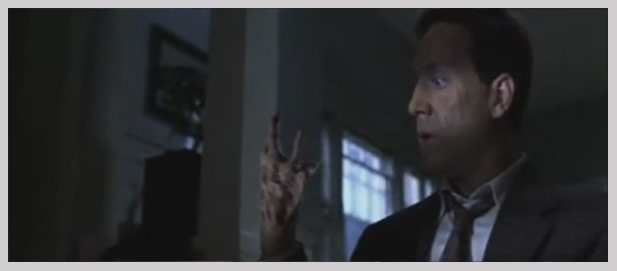
Update 2: June 24, 2016. Let’ see, I last updated this post in October of 2012, back when I still watched movies. A lot has changed for me since then, mostly in the offspring department. I have two kids now! Which is great. But you know, some of your old hobbies just go by the wayside. I did get to finally catch Pixar’s “Inside Out”! And we get to add to this post!
Bing Bong
When the Pixar people got around a table to discuss the handling of Bing Bong’s death (and the manner in which he disappears) I have to assume someone mentioned Marty McFly. It’s basically an homage. If you don’t remember, Bing Bong is the imaginary friend of Riley’s toddler years.
The filmmakers bravely thread a needle here. When Riley forgets things, they disappear. And it’s totally reasonable that the imaginary friend of a two year old would be forgotten. That’s life. It’s not painful, because we don’t remember it. But the moment is still poignant and sad and clever in all the right ways. The disappearance on Bing Bong begins, of course, with his hand.
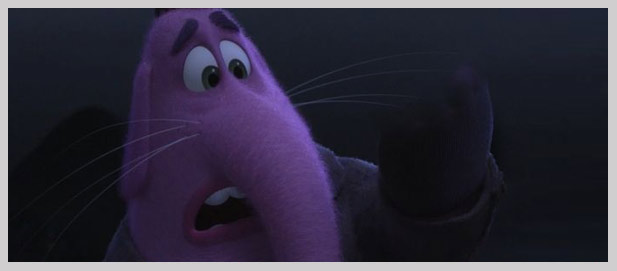
Update 3: June 4, 2022. I last updated this post in 2016, back when I had two kids. Now I have four. I’m busy!
Miguel Rivera
And look, I’ve returned with another Pixar example! Inside Out with Bing Bong (above) came out in 2015. Coco came out two years later in 2017.
I have many questions: were both screenwriters consciously doing an homage to Marty McFly? Was Coco written well before any Inside Out screenings? (I assume it was.) What did the Coco screenwriter think when they watched Bing Bong’s hand disappear? Did they think “Hey, I’m doing that bit too. It’s a great bit.”
Personally, I’m fine with it. Marty McFly deserves an homage in every film. In fact, I really hope this happens in another Pixar film soon. We already have a Time Travel Subgenre within this specific list. I’d love to add a Pixar Subgenre too, but I need at least three examples, right?
In May of 2011 I set out to increase conversion rate on our “Custom T-Shirt” landing page. Variations of the keyword “Custom T-Shirts” (including “Customized Shirts”, “Personalized Tees”, etc.) are our most expensive and highest volume paid search terms. If we could improve our conversion rate on these terms, then we could afford to increase bids, and bring in more revenue.
To do this, I redesigned the landing page and ran an A/B test using Google Website Optimizer (which has since been merged into Google Analytics).
I redesigned the Custom T-Shirt landing page with a specific strategy in mind. Unfortunately, I won’t be able to divulge many details in this post because that knowledge belongs to eRetailing. We can’t give away all of our secrets. Instead, I will show you four screenshots: The new landing page, the old landing page, the A/B test experiment results, and our revenue graph (sans numbers) showing the increase in revenue after the test.
(The revenue graph also contains the margin graph, which shows that we were able to increase revenue without sacrificing profitability. I include this because it would be pretty easy to raise revenue drastically if we simply spent a lot more money on paid search… but that would not be profitable.)
This was a successful experiment. Conversion rate went from 1.40% to 3.75%. Click images to embiggen.